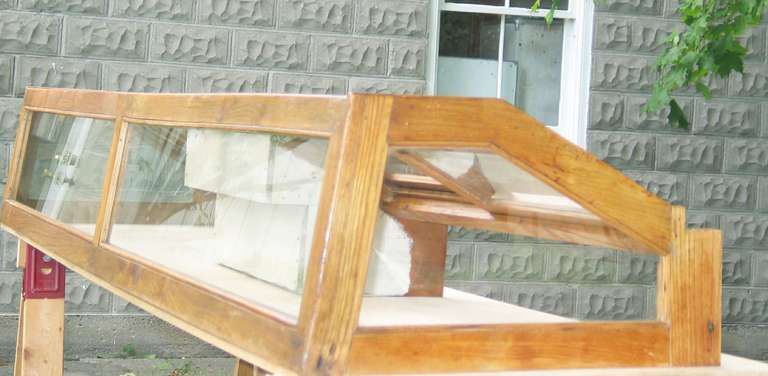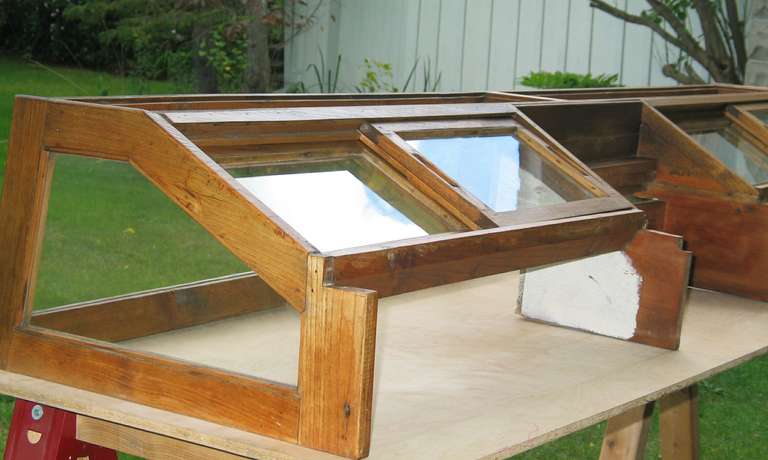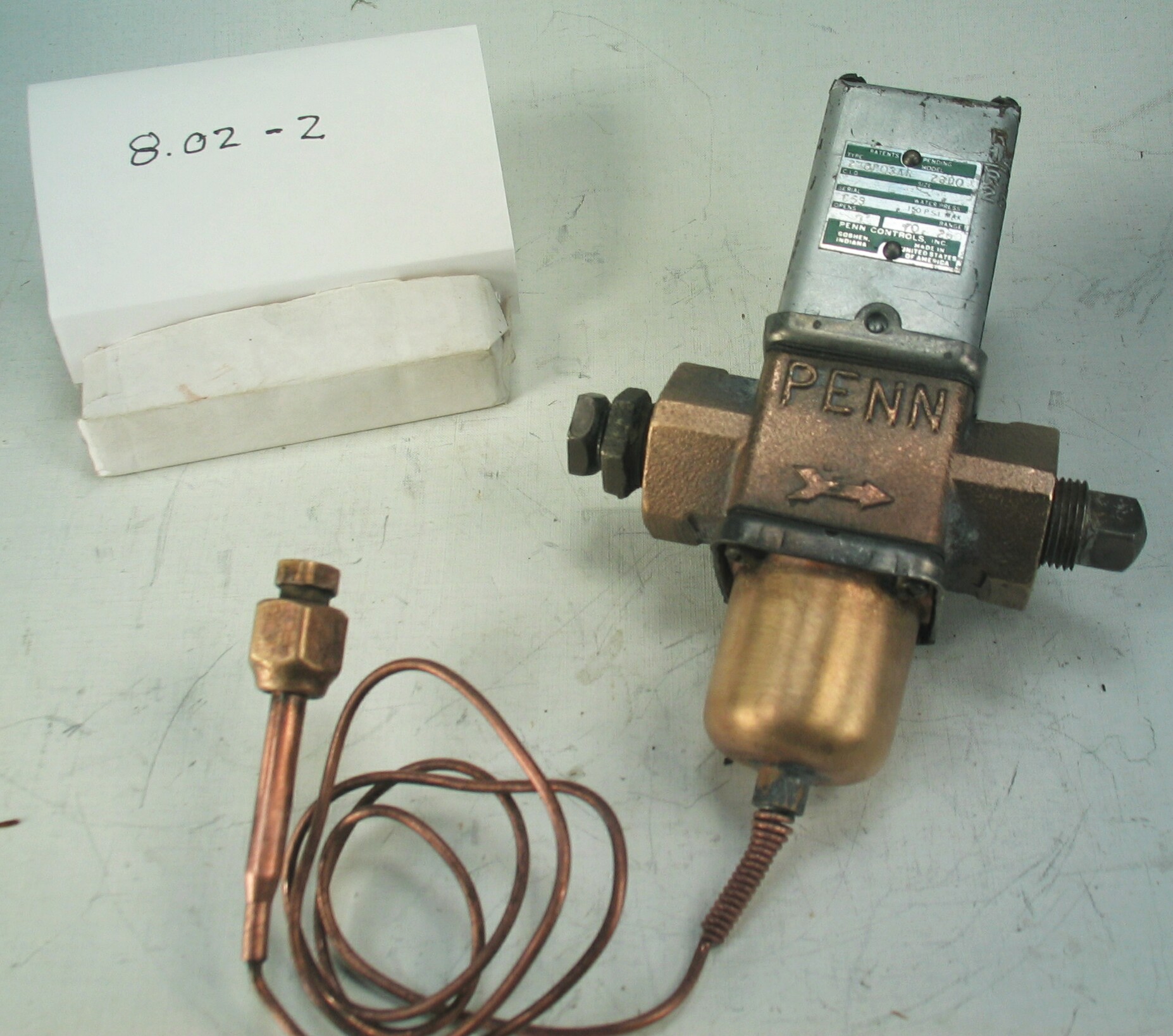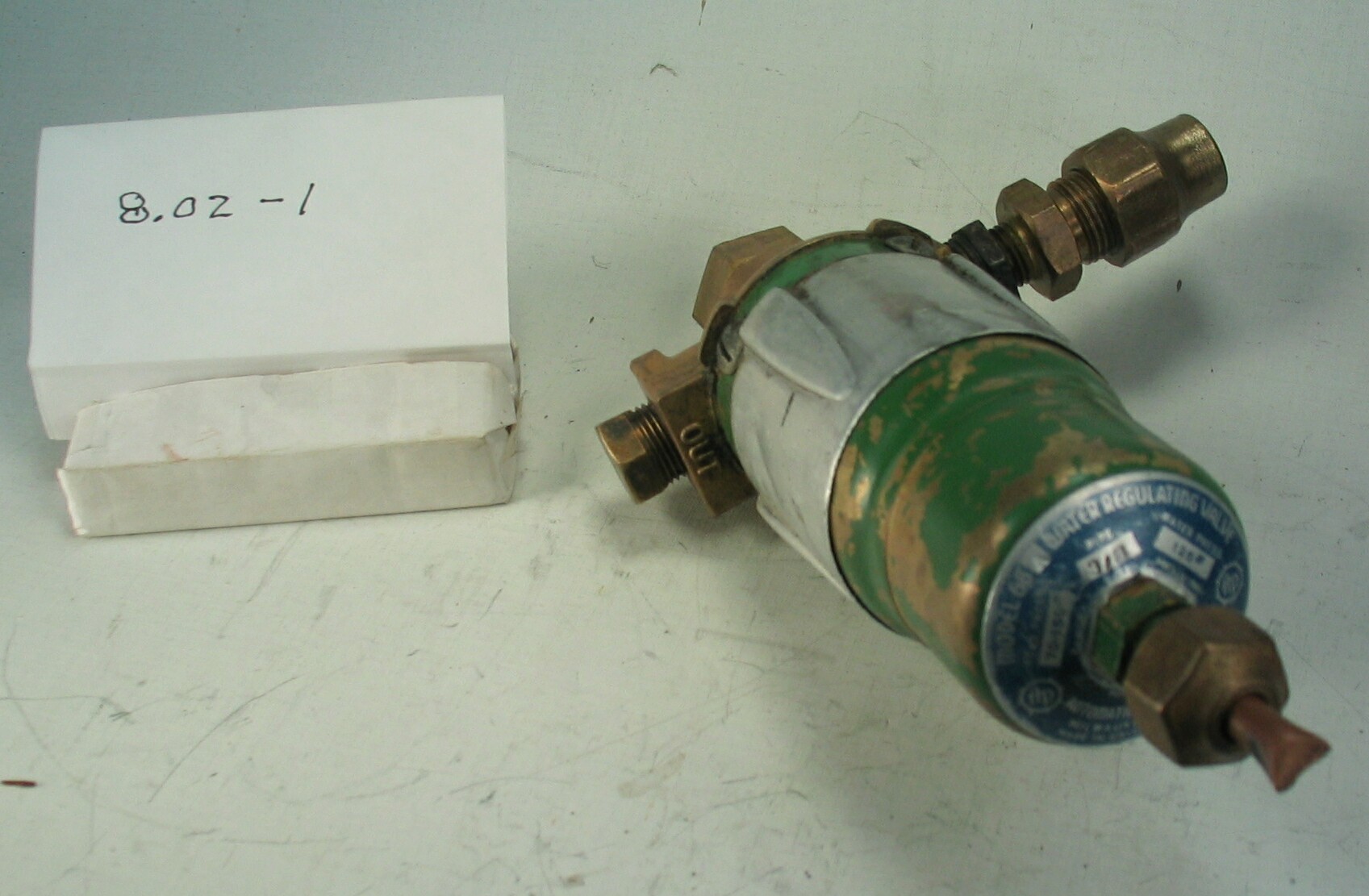8.02-5: 1930s Meat Sales Counter

| HHCC Accession No. 2003.010 | HHCC Classification Code: 8.02-5 |
|---|
Description:
Meat sales counter for mechanical refrigeration, display section, in ‘ inch plate glass and solid oak cabinet with clear, light golden varnished finish, 1930
Group:
8.02 Other Refrigerating and Air conditioning Components and Parts - Commercial
Make:
Unknown, believed to be Sherer-Gillet Co. Ltd, Quelph Ontario, See Note #1
Manufacturer:
Believed to be Sherer-Gillet Co. Ltd, Quelph Ontario
Model:
Unknown
Serial No.:
Unknown
Size:
7’ 10x 24x 14’h
Weight:
60 lbs
Circa:
1930
Rating:
Exhibit Quality, Very Rare
Patent Date/Number:
Provenance:
From York County (York Region) Ontario, once a rich agricultural hinterlands, attracting early settlement in the last years of the 18th century. Located on the north slopes of the Oak Ridges Moraine, within 20 miles of Toronto, the County would also attract early ex-urban development, to be come a wealthy market place for the emerging household and consumer technologies of the early and mid 20th century.
This artifact was discovered in the 1950’s in the used stock of T. H. Oliver, Refrigeration and Electric Sales and Service, Aurora, Ontario, an early worker in the field of agricultural, industrial and consumer technology.
Type and Design:
Construction:
This meat display case, is reflective of the style manufactured by the Sherer-Gillett Co, founded in 1914, as shown in the Kelvinator engineering manual of 1930, Form C 3361-2. Many of these early cases were supplemented by the addition of natural ice, obtained from the local ice and coal dealer. This “display section” would sit on top of a its refrigerated base, referred to as “the bunker”, equipped with static fin coils running the length of the bunker - see also Kelvinator manual, Form C3361-2.
Material:
Solid oak cabinet with ‘’ plate glass panels
Special Features:
Sliding oak framed, 1/4 “, plate glass access doors, fitted to oil impregnated, oak runners, with top plate glass lights, plate glass end panels and sloping front, with top plate glass customer viewing window.
Accessories:
Capacities:
Performance Characteristics:
Operation:
Control and Regulation:
Targeted Market Segment:
Leading food merchants of the period, understanding the market possibilities that the advent of modern, mechanical refrigeration had made possible, were anxious to be part of the new movement in the marketing of perishables- including meats and later green vegetables.
Consumer Acceptance:
Merchandising:
Market Price:
Technological Significance:
This classic, refrigerated, commercial meat display case from the early years of the 20th century reflects well the state of refrigeration, application engineering of the period. Here refrigeration equipment manufacturers are seen reaching out for new innovated applications for their technology, making the technology a part of indispensable, everyday experience in the life of the nation.
Here, too, we see the evolution of the new food industry and culture, mechanically refrigerated foods from producer, to neighbourhood merchant to the household refrigerator. The new industry would provide new foods never experienced before by the consumer, as well as traditional ones but fresher safer and longer lasting. The embryoniuc years of the modern food retailer are to be found in this early, refrigerated, meat display fixture
The design idiom, construction techniques, available for cabinet technology, as well as materials of social preference are also well illustrated here, plate glass and solid oak in natural finish. What is illustrated is an early offering of the refrigeration industry. A product of the “wooden ice box culture”, this idiom was about to change dramatically, however, as customer preference moved to a more modern look for a new time.
Henceforth, refrigeration fixtures would appear with cabinetry executed in gleaming white porcelain steel panels, brake formed using the increasingly sophisticated manufacturing techniques and machinery, much of it developed in Ontario for Ontarians, by a new innovated generation of designers, engineers and production line craftsman. 1) The refrigeration fixture catalogues of the period tell many interesting stories of social and cultural change, as well as the massive technological and social values driven changes, driving a new Ontario economy.
Industrial Significance:
A classic example of a “transitional” or “sandwich” technology, one caught on the fly. Here the snapshot is between two cooling technologies, cooling with ice and mechanical refrigeration ‘ often a little of both in the early years
Socio-economic Significance:
The availability and merchandising of perishable food products would change dramatically with the appearance of such fixtures. Mechanical refrigeration first made popularly, commercially available in Canada in the latter part of the first quarter of the 20th century - and then only slowly in populated urban areas would change the Canadian diet, shopping practices and expectations for healthful, diverse and pleasurable culinary fair.
Socio-cultural Significance:
Donor:
G. Leslie Oliver, The T. H. Oliver HVACR Collection
HHCC Storage Location:
Tracking:
Bibliographic References:
See Kelvinator sales manuals and trade journals of the period
Notes:
Note #1: Ontario produced a number of manufactures of cabinetry for the rapidly expanding refrigeration industry in Ontario in the early 1930’s. Many refrieration equipment manufactures did not build their own cabinets in the early years of the industry, especially those for commercial, food store use. Ontario was well supplied with furniture manufactures and cabinetmakers in the period and a number of companies would move to specialise in the refrigeration cabinet field.
The refrigeration supplier catalogues of the early 1930’s included fixtures by the Sherer-Gillett Co., Quelph; Eureka Refrigerator Co., Owen Sound, and Brantford Refrigerator Co., Brantford Ontario.
The catalogues and trade literature also show a number of American manufactures of refrigerated fixtures were making in roads on the Ontario/Canadian market, such as Leonard, Grand Rapids Mich, a company that would subsequently be purchased by Kevinator, with the Lenard name being popularly seen in the households of the nation as a brand label employed by Kelvinator






